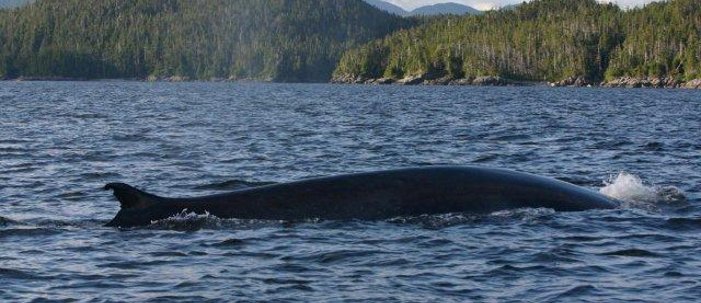The fin whale (Balaenoptera physalus) is currently listed as an endangered species due to drastic population declines as a result of 20th century whaling. Fin whales are a sub-set of the baleen family, and are also one of the largest mammal species on Earth -- second only to the blue whale in length and weight. They can measure from between 24-26 metres, and both males and females weigh between 50-70 tonnes (45,360-63,500 kg). In addition to their impressive size, fin whales are also incredibly fast. They can reach speeds of up to 37 Km/hr., which is swift considering both their size and the density of water. Their long, sleek bodies and streamlined head shape have given fin whales the title of ‘the Greyhound of the deep’. They move through the oceans, often accompanied by 6-10 other fin whales, although their feeding groups sometimes number up to 100 individuals.
Fin whales have deep grey to dark brown/black upper bodies and sides, while their underbellies and beneath their flippers and flukes are creamy white. Stretching from the lower jaw to the navel are 50-100 grooves that expand when the whales take in water during feeding -- characteristic of baleen whales. They also have a prominent, 60 cm dorsal fin located three-quarters of the way along their back which is slightly curved. A unique feature of the fin whale is the colouring pattern around the jaw area: their lower jaw is grey or black on the left side while white on its right side. This asymmetry is helpful to use when identifying and distinguishing fin whales from other whale species; however, no firm agreement exists as to the purpose of the asymmetrical colour pattern. It is suggested that it may be related to the fact that they primarily surface feed on their right sides.


